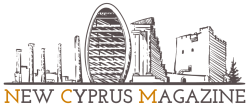Pyrgi, Cyprus is home to the unique xysta patterns, captivating visitors with its striking geometric designs. This art form, rooted in the ancient sgraffito technique, symbolizes the village’s identity and showcases its deeply rooted artisan skills. The village of Pyrgi, nestled in the scenic panorama of Cyprus, also belongs to the Mastichochoria, celebrated for its mastic gum production, further adding to its cultural significance. The allure of Pyrgi’s xysta patterns not only attracts tourists but also serves as a pillar of Cypriot tourism, inviting curious travelers to immerse themselves in the island’s rich history and vibrant community life. As Cyprus gains international exposure through media coverage, it shares its saga with the world, promoting a deeper understanding of Cypriot culture and highlighting the island’s commitment to celebrating its heritage.
What are the unique xysta patterns in Pyrgi, Cyprus?
Xysta are the striking geometric designs adorning the walls of Pyrgi, Cyprus. This art form involves applying layers of black sand and white lime and then scratching away part of the black layer to reveal the white beneath. Xysta is a distinctive feature of Pyrgi’s heritage, symbolizing the village’s identity and its deeply rooted artisan skills.
Nestled in the scenic panorama of Cyprus, the village of Pyrgi presents a living mosaic of history and culture. Here, the unique “xysta” captivate visitors, weaving a visual narrative as intriguing as the island itself. The BBC’s documentary spotlight on this village showcases these remarkable patterns, casting Pyrgi into the international gaze.
The Art of Xysta
The walls of Pyrgi tell tales of heritage through their striking geometric designs. This art form, known as xysta, is rooted in the ancient sgraffito technique. Artisans apply layers of black sand and white lime, then meticulously scratch away parts of the black layer to reveal the white underneath. Each pattern is a testament to the village’s identity, revealing not just aesthetic beauty, but a lineage of skill that has coursed through generations.
In the labyrinth of narrow lanes, every turn is a gallery display, showcasing the enduring legacy of the villagers. These designs do more than decorate; they bind the community to its past while captivating those who stroll through the present.
The Mastic Village
Beyond the allure of xysta, Pyrgi is also part of the Mastichochoria, a collective of villages celebrated for their mastic gum production. The mastic tree, indigenous to this region, produces a resin revered for its versatility. This ‘tear of Chios’ is not only a staple in local culture but also a prized ingredient worldwide. Its uses span from health remedies to culinary innovations, proving that the reach of Pyrgi’s heritage extends far beyond its borders.
Mastic’s significance in Cyprus transcends its tangible applications. It serves as a cultural emblem, a source of pride for the locals who have sustained its harvest and cultivation for centuries.
Pyrgi and Tourism
The quaint allure of Pyrgi’s xysta patterns is more than a mere tourist attraction; it is a pillar of Cypriot tourism. The village, alongside other hidden gems on the island, benefits significantly from international exposure like that provided by the BBC. Such narratives and images invite the curious traveler to delve into Cyprus’s rich history and vibrant community life.
Tourism in Cyprus thrives on the fascination stirred by its unique offerings. Pyrgi, with its enchanting xysta, beckons visitors to immerse themselves in a cultural journey that is both profound and picturesque.
Cyprus on the World Stage
Through documentaries and media stories, Cyprus is forging a strong presence in the international community. This coverage is an opportunity for the island to share its saga with the world. It promotes a deeper understanding of Cypriot culture and highlights the island’s commitment to celebrating its heritage.
As global interest grows, spurred by features from media entities like the BBC, Cyprus’s narrative continues to unfold. The spotlight on Pyrgi is but one chapter in the broader story of an island rich with tradition, eager to share its legacy, and ready to charm every new generation that sets foot on its storied shores.
FAQ
What are the unique xysta patterns in Pyrgi, Cyprus?
Xysta are the striking geometric designs adorning the walls of Pyrgi, Cyprus. This art form involves applying layers of black sand and white lime and then scratching away part of the black layer to reveal the white beneath. Xysta is a distinctive feature of Pyrgi’s heritage, symbolizing the village’s identity and its deeply rooted artisan skills.
What is the Mastichochoria in Pyrgi, Cyprus?
Pyrgi is part of the Mastichochoria, a collective of villages in Cyprus known for their mastic gum production. The mastic tree, native to the region, produces a resin called ‘tear of Chios’ that is highly valued for its versatility. Mastic gum has cultural significance and is used in various applications, including health remedies and culinary innovations.
How do the xysta patterns contribute to tourism in Pyrgi, Cyprus?
The xysta patterns in Pyrgi are not only a tourist attraction but also a pillar of Cypriot tourism. The unique designs, along with other hidden gems on the island, benefit from international exposure through media coverage. These narratives and images invite curious travelers to explore Cyprus’s rich history and vibrant community life.
What is the significance of Cyprus’s international exposure through media coverage?
Cyprus is gaining international exposure through media coverage, such as the BBC’s documentary on Pyrgi. This exposure provides an opportunity for the island to share its cultural heritage with the world. It promotes a deeper understanding of Cypriot culture and showcases the island’s commitment to celebrating its heritage. As global interest grows, Cyprus continues to unfold its narrative and charm new generations with its rich traditions.

